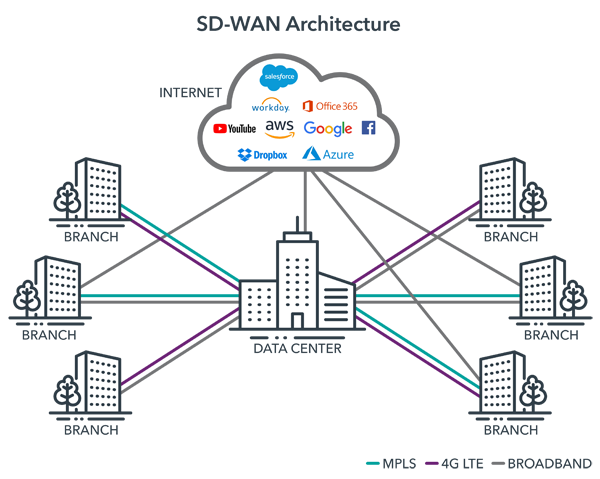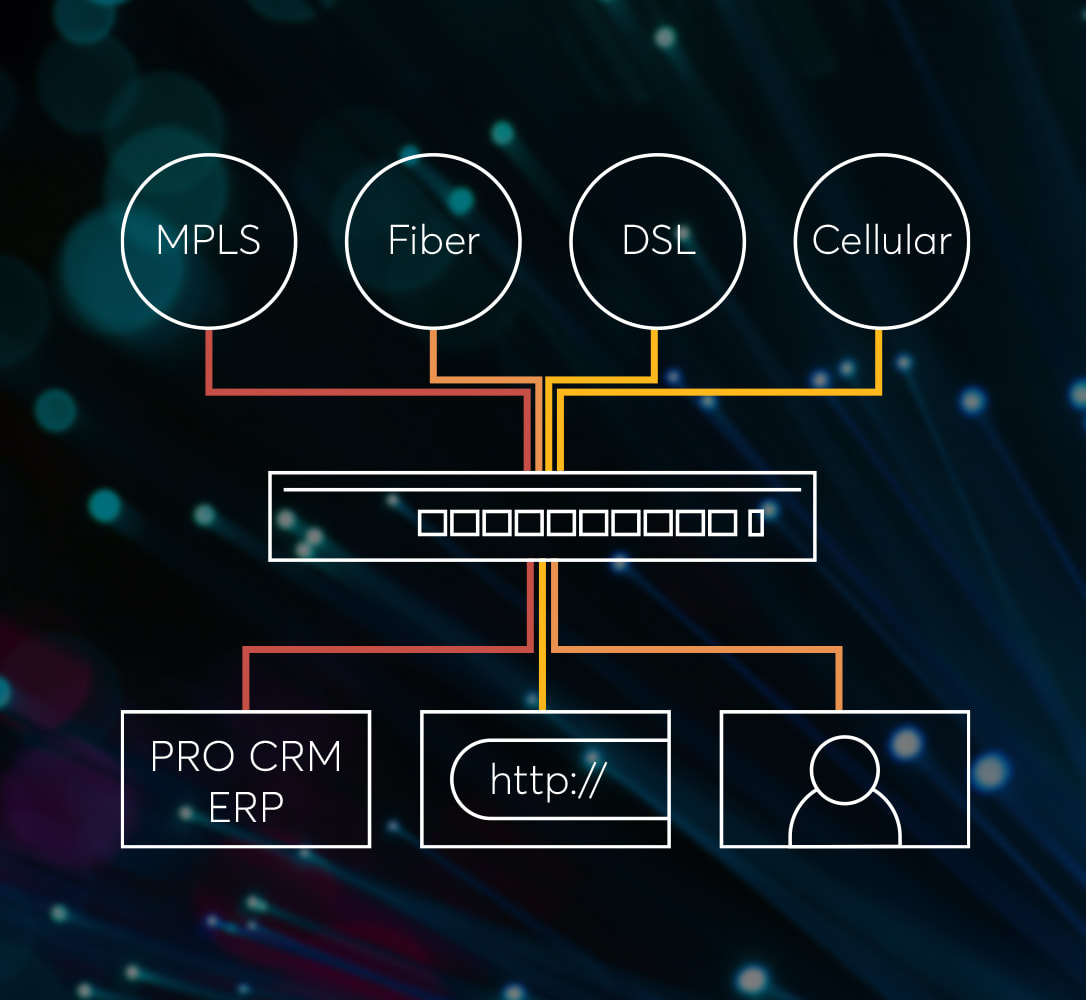Managed SD-WAN Solutions
|
What is SD-WAN? Software Defined Wide Area Network, also known as “SD-WAN” is a software defined networking (SDN) approach that elevates network traffic management away from hardware and premises, to next generation software in the cloud for enhanced agility, control and visibility
How does it work? SD-WAN uses a centralized control function incorporating user defined application and routing policies, to provide highly secure, dynamic, application-aware network traffic management. This level of control allows for optimal delivery paths across any combination of network transport type, providing flexible deployment options and improved total cost of ownership.
|
Cut Cost Speed up Network
Case Study
This is an example of one of TTI Customers who was able to cut over 60% on their MPLS Network. They had 7 locations (150 phones & PC) billing out an average of $2,300.00 a month per location. This cost includes 40Mg Fiber at two locations, 20Mg Fiber to the remainder 5 locations and Comcast & FiOS backup circuits. Phone calls included in cost. TTI setup a Dual Wan Failover at two main locations with Fios & Comcast using Gig Routers. The remainder 5 locations we installed cellular SIM card that integrates with our router. We setup 400Mg Service at the sister locations with 100M Backup that integrates in their Peplink 20X Router. We are able to bond the two services utilizing Peplink Speed Fusion technology which creates and unbreakable interruption in a failover which means no dropped calls when Primary ISP goes down. We then setup a vMPLS Network so they could transfer data and calls securely. The average monthly cost was $850.00 per location. This included Internet, Failover & Phone Calls. The savings over 3 years = $52,200.00 The ROI was roughly 6 months. This includes new Network Equipment & 85 high-end 27 Button Cloud Phones. Now the customer experiences less drops, less QoS complaints, saves money and remains HIPPA Compliant. |

SD-WAN is WAN Virtualization
In the same way server virtualization abstracts the underlying physical hardware from the logical virtual servers that run on it, WAN virtualization is where a logical WAN connection (to either the Internet or between branch offices) can use multiple underlying connectivity technologies (like xDSL, MPLS, cellular and fiber) at the same time but presents this connectivity to users and applications as a single direct to Internet or secure site to site connection.
In the same way server virtualization abstracts the underlying physical hardware from the logical virtual servers that run on it, WAN virtualization is where a logical WAN connection (to either the Internet or between branch offices) can use multiple underlying connectivity technologies (like xDSL, MPLS, cellular and fiber) at the same time but presents this connectivity to users and applications as a single direct to Internet or secure site to site connection.
|
SD-WAN is Intelligent
SD-WAN enabled networks are capable of monitoring WAN health and quality, then using these measurements to make intelligent decisions on application traffic flow. This arrangement has several key benefits: Real time services like VoIP and video can be sent via the lowest latency link
|

SD-WAN is Secure VPN
By using encrypted VPN, branch offices gain secure, local network access to cloud resources. SD-WAN makes these branch office VPN faster and more affordable by combining the bandwidth of multiple connections into a single logical WAN connection. In addition, SD-WAN provides the ability to offload public Internet traffic at the network edge, reducing traffic sent through the VPN.
By using encrypted VPN, branch offices gain secure, local network access to cloud resources. SD-WAN makes these branch office VPN faster and more affordable by combining the bandwidth of multiple connections into a single logical WAN connection. In addition, SD-WAN provides the ability to offload public Internet traffic at the network edge, reducing traffic sent through the VPN.
Explore potential benefits for your business
|
Agility and Flexibility
|
Application Performance
|






